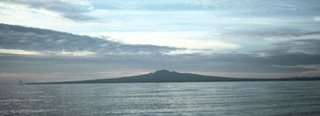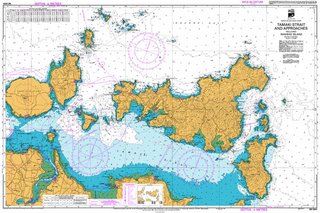
I am in Auckland today and doing a trip across the Waitemata Harbour to Rangitoto Island, part of the Hauraki Gulf Marine Park. It is a dominant landmark of Auckland, New Zealand. Situated 35 minutes by ferry from Downtown Auckland, the islands' unique geological and natural attributes are of international interest. What is less known is that the three Bach Settlements of Rangitoto Wharf, Islington Bay and Beacon End are also of national importance


Volcanic Origins
The island emerged from the sea in a series of fiery volcanic explosions. Lava cooled and hardened into a cone which would have looked quite different from the scrub-covered cinder cone today rising 259 metres above the sea.
Further eruptions sent red hot lava flows down the sides of the volcano, forming the black basaltic rock which makes up 95 per cent of this roughly circular, island, five kilometres across. Ash from the eruptions engulfed neighbouring Motutapu Island and the Maori settlements there.
Bare lava fields, lava caves, pillars and tunnels and different types of lava flows are all obvious features of the island's volcanic landscape. The summit can be reached in a two hour return walk from Rangitoto Wharf. A loop track around the crater rim gives fine views of the extinct crater and Hauraki Gulf.
Diverse History
Maori use of the island appears to have been limited compared with neighbouring Motutapu and Motukorea (Browns Island). Rangitoto was used by early Maori as a commanding lookout in times of war and as a parrot reserve, or rahui-kaka. There are ancient Maori burial caves on the island, the resting place for bones brought across from Motutapu Island.
The Crown purchased Rangitoto in 1854. It was designated a public domain in 1890 and became a popular destination for picnickers. During the 1920s and 1930s prisoners built handpacked roads and trails, some of which are now used as walk-ways on the island. They also constructed the stone walls around the landings and a swimming pool.
Bach sites were leased to help pay for island developments. Some of these baches will be preserved as historic buildings. During World War II there were extensive defence installations on the island, including a fire command post on the summit.

No comments:
Post a Comment